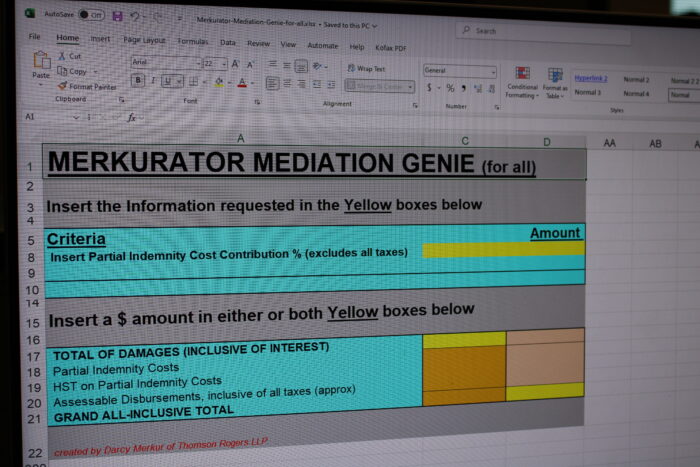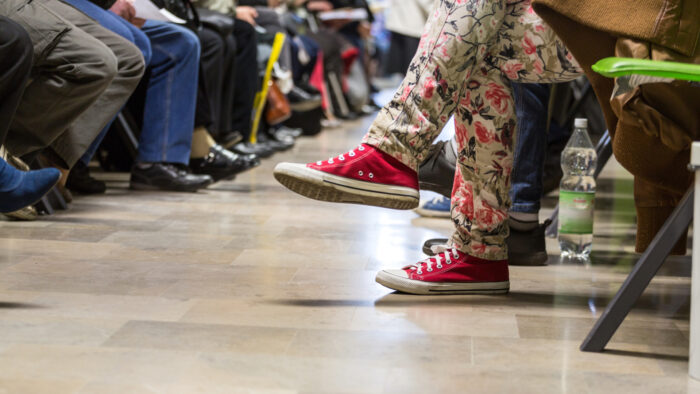Pedestrian Car Accident Claims – To Settle or Not To Settle
Author(s): Stacey L. Stevens*
July 13, 2017
Pedestrians involved in a car accident should be cautious when settling their claim. In particular, settlement of a catastrophic Statutory Accident Benefits(SABS) claim prior to the negligence trial can be risky. The recently released decision in Cadieux v. Saywell, 2016 ONSC 7604 (CanLII) is a perfect example of why this may not always be advisable where there are multiple defendants and a possibility your client will be found partially at fault for their injuries.
In September 2006, Chad Cadieux suffered a serious brain injury together with multiple orthopaedic injuries following a pedestrian car accident. As a result of the car accident, Mr. Cadieux applied for and received Statutory Accident Benefits. His SABS claim was eventually settled for $900,000.00 (which included $250,000 for medical/rehabilitation benefits and $350,000 for attendant care benefits). At the same time, Mr. Cadieux also settled his negligent claim against the Co-Defendant Susan Cloutier. Three years later, and at the conclusion of a 7-week trial solely against the co-Defendant Mr. Saywell, the jury found Mr. Cadieux, Ms. Cloutier and Mr. Saywell equally responsible for the car accident and returned a verdict in the Plaintiffs’ favour in excess of $2,300,000.00.
Following the trial, the Defendants Saywell brought a Motion to determine, in part, what portion of Mr. Cadieux’s Statutory Accident Benefits settlement should be deducted from the jury’s damages award made against him.
In particular, the Trial Judge was asked to determine
(1) whether the total amount received from the SABS insurer for medical benefits and attendant care benefits of $600,000 should be deducted from the jury’s award solely for medical benefits and
(2) Mr. Saywell should enjoy the benefit of deducting 100% of the SABS settlement or should it be apportioned equally between Mr. Saywell and Ms. Cloutier. Depending on which way the Trial Judge ruled, the Plaintiffs’ were at risk of not beating Mr. Saywell’s $500,000 offer to settle and being ordered to pay his costs of defending the trial.
Counsel for Mr. Cadieux took the position that
(1) the deduction should be on an “apples to apples basis” and since the jury only awarded damages for future medical expenses, and not attendant care, the Defendant Saywell was only entitled to reduce this award by $250,000 and
(2) since the jury found Mr. Saywell and Ms. Cloutier to be equally responsible for his injuries, Mr. Saywell should only be allowed to deduct 50% of the SABS settlement, net of legal fees.
Counsel for Mr. Saywell argued that the phrase “health care expenses” in section 267.8(4) of the Insurance Act should be defined by applying section 224(1) of the Health Care Act which states:
224(1) “Health care” includes all goods and services for which payment is provided by the medical, rehabilitation and attendant care benefits provided for in the Statutory Accident Benefits Schedule.
He went on to argue that the specific reference to medical benefits and attendant care benefits in section 224(1) allows the court to rule that both of these categories meet the definition of “health care expenses” as referred to in 267.8(4) and are properly deductible regardless of the fact the jury made no specific award for attendant care.
Justice Hackland relied on the recent decision of the Divisional Court in Mikolic v. Tanguay et al, 2016 ONSC 71 which ruled that a SABs settlement for past and future medical expenses must be deducted from a tort award for future care expenses and the Ontario Court of Appeal decision in Basandra v. Sforza 2016 ONCA 251 which identified categories of deductibility; one of which included health care expenses. With this in hand, Justice Hackland concluded that both attendant care and medical rehabilitative costs “are within the health care silo for deductibility purposes” and the entire $600,000 was available to reduce of the jury award.
With respect to the second issue; whether Mr. Saywell was entitled to reduce the jury award by 100% of the SABs settlement, Justice Hackland acknowledged the Insurance Act is silent on this issue. He relied on the principles of equity and common sense to apportion the reduction 50-50 between the Defendants. In doing so, he concluded that to allow Mr. Saywell, a non-settling Defendant, to enjoy a 100% reduction from his 1/3 share of the damages would result in him being unjustly enriched and would deter pre-trial settlements.
In the end, after the apportionment of liability and deductions for the SABs settlement were factored in, the Plaintiff’s jury award was reduced from $2,300,000 to $500,827 and the Cadieux family narrowly escaped being ordered to pay Mr. Saywell’s costs of defending the trial.
If you have any questions, please contact, personal injury lawyer Stacey Stevens at 416-868-3186 or by EMAIL.
Stacey Stevens is a partner at Thomson Rogers. Her practice is devoted to helping people who have been seriously injured in car accidents, motorcycle accidents, slip and falls, who have been denied accident benefits or disability insurance benefits as well as victims of sexual assault. She is ranked in the peer-reviewed Canadian Legal Lexpert Directory as Repeatedly Recommended in Plaintiff Personal Injury Litigation.
Other posts by Stacey Stevens:
https://trlaw.com/news/claiming-economic-loss-lost-opportunity/
Share this




